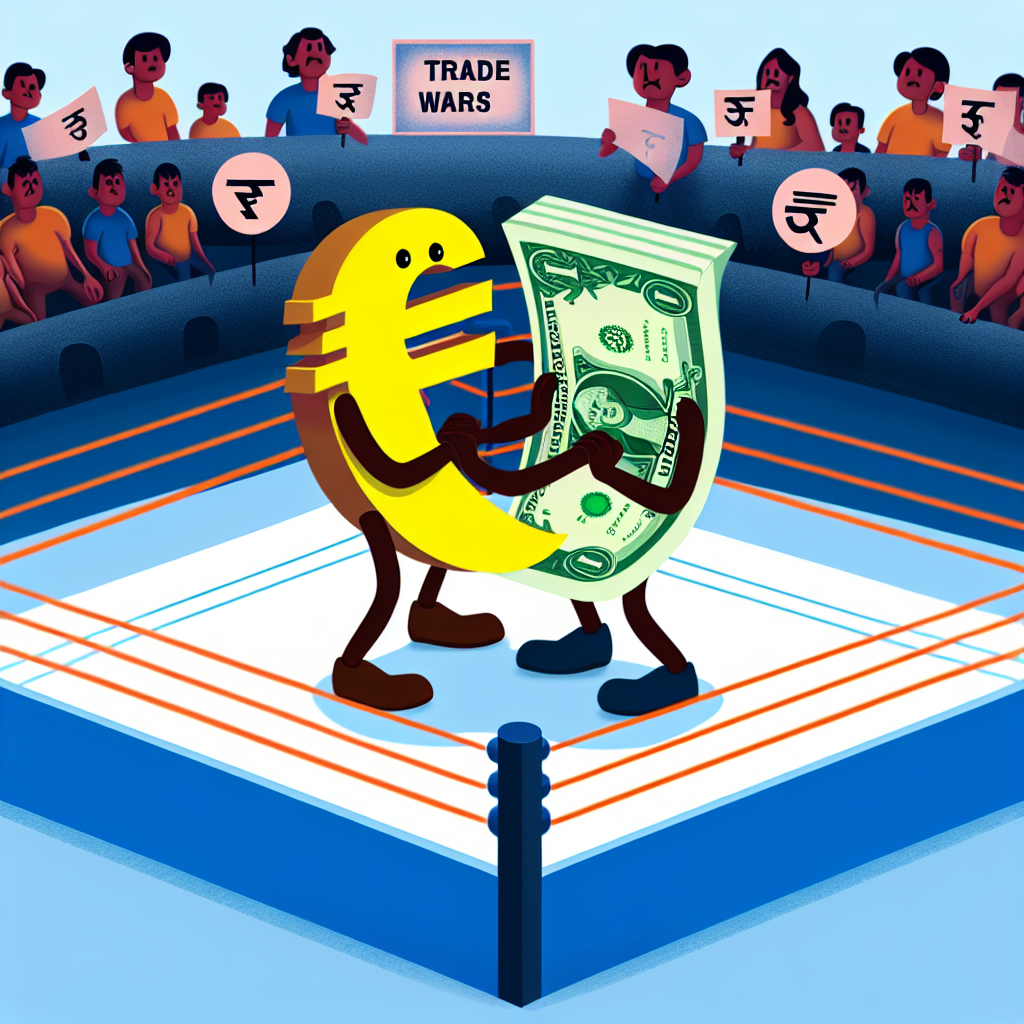The Rupee Weakens Against Dollar Amid Trade Wars
The Indian Rupee has experienced significant volatility in recent years, particularly in the context of escalating global trade tensions. As trade wars intensify, the Rupee’s depreciation against the US Dollar has become a focal point for economists, policymakers, and investors alike. This article explores the underlying causes of the Rupee’s weakening, the impact of trade wars on currency markets, and the broader economic implications for India.
Understanding the Rupee-Dollar Exchange Dynamics
The exchange rate between the Indian Rupee (INR) and the US Dollar (USD) is influenced by a complex interplay of factors including trade balances, foreign investment flows, interest rate differentials, and geopolitical events. The US Dollar, being the world’s primary reserve currency, often strengthens during periods of global uncertainty, which can put downward pressure on emerging market currencies like the Rupee.
In recent years, the Rupee has seen a steady decline against the Dollar, moving from around 65 INR per USD in early 2018 to over 82 INR per USD by mid-2023. This depreciation has been exacerbated by the ongoing trade wars, particularly between the US and China, which have ripple effects on global trade and capital flows.
Trade Wars: A Catalyst for Currency Volatility
Trade wars, characterized by the imposition of tariffs and retaliatory measures between major economies, disrupt global supply chains and create uncertainty in international markets. The US-China trade war, which began in 2018, has had a profound impact on emerging markets, including India.
- Reduced Export Demand: India’s exports to both the US and China have faced headwinds due to tariffs and shifting trade policies, leading to a decline in foreign exchange earnings.
- Capital Flight: Investors often seek safe-haven assets during trade tensions, resulting in capital outflows from emerging markets and increased demand for the US Dollar.
- Inflationary Pressures: Tariffs on imported goods can lead to higher input costs for Indian manufacturers, contributing to inflation and further weakening the Rupee.
For example, India’s IT and pharmaceutical sectors, which rely heavily on exports to the US, have faced uncertainties due to changing trade regulations and tariffs. Additionally, the disruption in China’s manufacturing sector has affected Indian companies dependent on Chinese raw materials and components.
Case Study: The 2018-2019 Rupee Depreciation
Between mid-2018 and mid-2019, the Rupee depreciated by nearly 12% against the Dollar, falling from approximately 68 INR/USD to 77 INR/USD. This period coincided with heightened US-China trade tensions, rising crude oil prices, and tightening US monetary policy.
Key factors during this period included:
- Rising Oil Prices: India imports over 80% of its crude oil, and higher prices increased the trade deficit, putting pressure on the Rupee.
- US Federal Reserve Rate Hikes: Higher interest rates in the US attracted capital away from emerging markets.
- Trade War Uncertainty: The ongoing tariff battles created volatility in global markets, leading to risk aversion among investors.
The Reserve Bank of India (RBI) intervened by selling foreign exchange reserves to stabilize the Rupee, but the currency remained under pressure due to persistent external challenges.
Implications for the Indian Economy
The weakening of the Rupee has both positive and negative consequences for India’s economy:
- Export Competitiveness: A weaker Rupee makes Indian goods cheaper in international markets, potentially boosting exports.
- Import Costs: Conversely, imports become more expensive, increasing costs for businesses and consumers, especially in sectors reliant on imported raw materials.
- Inflation: Higher import prices can lead to inflationary pressures, affecting purchasing power and economic growth.
- Foreign Debt Servicing: Companies and the government with dollar-denominated debt face higher repayment costs.
For instance, the Indian automobile industry, which depends on imported components, has seen cost pressures due to the Rupee’s depreciation. Meanwhile, IT exporters have benefited from improved margins due to favorable exchange rates.
Policy Responses and Future Outlook
The Indian government and the RBI have adopted several measures to mitigate the impact of currency volatility:
- Monetary Policy Adjustments: The RBI has used interest rate changes and open market operations to manage liquidity and stabilize the currency.
- Foreign Exchange Reserves: India’s foreign exchange reserves have been bolstered to provide a buffer against external shocks.
- Trade Diversification: Efforts to diversify trade partners and reduce dependence on China aim to reduce vulnerability to trade wars.
Looking ahead, the Rupee’s trajectory will depend on the resolution of global trade disputes, oil price trends, and domestic economic policies. While trade wars have introduced significant uncertainty, India’s strong fundamentals and policy measures provide some resilience against prolonged currency weakness.
Conclusion
The weakening of the Indian Rupee against the US Dollar amid ongoing trade wars highlights the interconnectedness of global trade, finance, and geopolitics. Trade tensions disrupt export demand, trigger capital flight, and increase inflationary pressures, all of which contribute to currency depreciation. While a weaker Rupee can enhance export competitiveness, it also raises import costs and inflation risks, posing challenges for the Indian economy.
Effective policy responses, including monetary interventions and trade diversification, are crucial to managing these challenges. As global trade dynamics evolve, India’s ability to navigate these complexities will determine the Rupee’s stability and the broader economic outlook.





